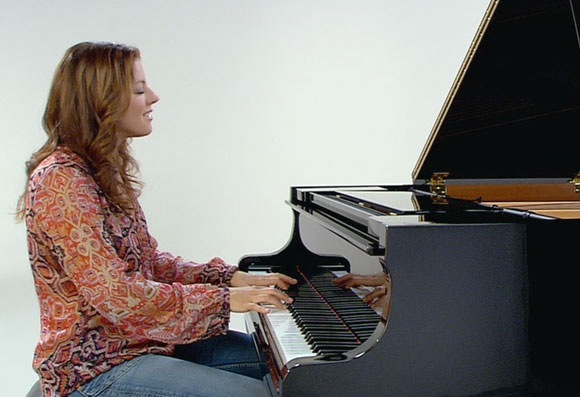There’s no question that GarageBand represents one of the better values in music software, especially since even Apple expect a lot of its users will simply acquire it with their Mac. It still ranks high on software you’d recommend to a beginner on a budget. Apple’s decision this year to add lessons, interactive lessons that introduce you to musical concepts, and to invite famous artists to play familiar songs, is a fantastic idea.
The Artist Lessons themselves, however, have been relatively few in number. I expect more are coming, but so far the only release since GarageBand came out was this week’s three episodes, featuring Sting and Sarah McLachlan.
Yes, that’s right, here’s Apple’s artist lineup: Sting, Sarah McLachlan, Fall Out Boy, Norah Jones, Colbie Caillat, Sara Bareilles, John Fogerty, OneRepublic, Ben Folds
So, at worst it feels a bit like the 1990s, and at best, like the tour schedule at Long Island’s Jones Beach. The issue here is, musical tastes are varied; part of what drives people to music in the first place is personal expression. There are a total of just 13 songs on the platform, all picked by Apple. Some of the lessons are pretty good, and the production values are slick, but there’s not enough quantity to satisfy people hungry to learn music and the choices overall are bland.
With all due respect to Apple, though, you can’t expect Apple to provide everything. Some artists and publishers have already built their own lessons. It’s time for others to step up, too.
The blog Synthtopia is pretty succinct in its headline:
I agree with Synthopia that the solution should be opening this up as a platform for people to make their own lessons:
“turn GarageBand into a video podcast store that lets you watch free and commercial educational music podcasts.”
The lessons in GarageBand are more than just video files; they include music files and some interactive features. Some sort of authoring tool wouldn’t be a bad idea.
Right now, you can build on the existing open standard of Apple’s podcast support in iTunes – which, in turn, works with a variety of players and mobile devices. In fact, a “podcast” is really just an RSS feed. There’s no reason you can’t add media to those files. Apple explicitly supports the use of PDF, which means you can create podcasts that include video and notation. There’s no way to charge for that, but advertising support is possible. It’s also feasible for some artists that such a feature could be used to promote other revenue streams.
At some point, a retail option could make sense, too. Believe it or not, basic tablature and Standard MIDI Files remain highly popular online. All that’s missing is for artists to start packaging this up and selling on its own.
Maybe Apple will figure out how to build a store for this. But there’s no reason to constantly be dependent on Apple to get it right – or anyone else, for that matter.
And in the meantime, I think lessons are a good enough idea that other people will run with this even when Apple doesn’t. Macworld’s review looked at some of the current alternatives.
